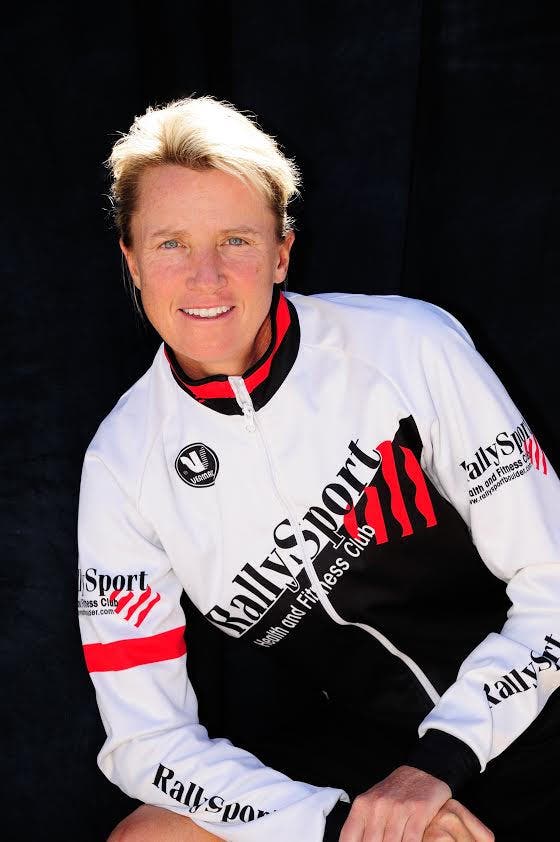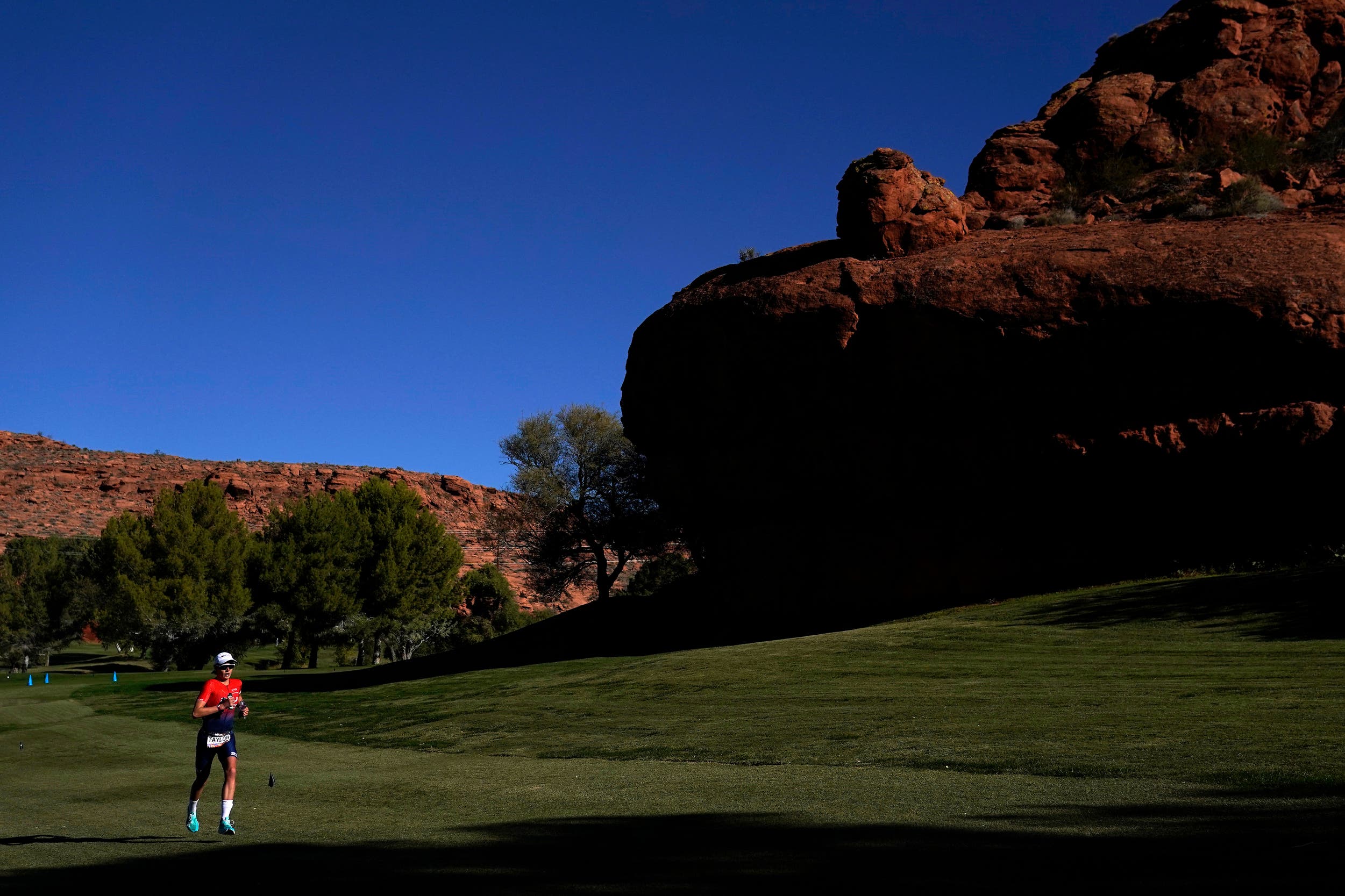The Pros are Flocking to this Strength Training Guru - and Seeing Big Results

(Photo: Erin Carson Instagram (@ecfit_strength))
When you work with all the women on a world championship podium it would be understandable if you had divided loyalties. When you work with all the women on a world championship podium, you are probably a world beater at your own job too.
Step forward (on a very stable footing) Erin Carson, the founder of ECFIT Strength Performance in Boulder, who was firmly in the corner of not only new Ironman 70.3 world champion Taylor Knibb in St. George, but also the 24-year-old’s fellow podium performers Paula Findlay and Emma Pallant-Browne.
“I’m familiar with all the athletes, because as much as I’m a strength coach I’m also very much a fan of the sport,” Carson explains over a half-hour chat in which she is more energizing than a set of deadlifts. And while that might sound glib, it underscores an important point – the connection she has with athletes is key to them buying into her philosophy.
More on that shortly, but first we can confirm that Carson wasn’t surprised when Knibb, who she trains in support of head coach Ian O’Brien, delivered such a dominant display. “I know how strong Taylor is because I see her three times a week,” Carson says. “Taylor’s patient and has the ability to look at the bigger picture and forgo instant gratification. I think having balance has been a real key to her success. She’s not pigeonholed herself as just a triathlete, she reads, enjoys the outdoors and loves her family and friends. Those are wonderful distractions that as triathletes we tend to forget sometimes. We should all remember we do this sport for our health.”

Creating Durable and Robust Athletes: Erin Carson’s Process
If Taylor’s performance wasn’t unexpected, Carson’s “most exciting moment” was seeing Findlay finish second in Utah, her best Ironman result to date.
“I believe in that kid. I’ve trained her for a long time and she’s been through a lot, but she is now so much more consistent,” Carson adds, explaining some of the challenges Findlay faced as she battled injury and almost quit the sport before eventually finding her groove in middle distance racing.
“It’s when they are in that challenging situation that the work I do becomes really important. We are just human beings, built of bone and connective tissue, and muscle, and we have to keep balanced. I used to watch so many triathletes do silly things in the weight room, thinking: ‘Why are they doing that?’ that I started creating a thought process around how I could help them. Now my whole job is to work towards creating the most durable and robust athletes I can so that a coach like Ian can train them and no niggles get in the way. There’s nothing more frustrating than being a high performance swim, bike and run coach and constantly having to work around injury and pain.”
Carson’s role consists of surrounding herself with educators that allow her to put the strength and conditioning work into action. “I’m not afraid to ask questions of people who are much smarter than me and I think my athletes have benefitted from that over the years.
“The most important ingredient I can bring is the understanding that hard training creates restrictions in the body. Our mobility work helps undo that specific tightness. If we can create a freedom of feel when they run, or access to power when they ride, our work is undeniable. In the first two or three sessions I try to create this ‘openness’ that builds trust, and once they increase in ease, easy speed we call it, it’s not difficult to sell them on the next phase which is finding balance – front side open, back side activated. Once the tightness is released – and we’re talking much more about connective tissue than muscle – phase two is activating muscles that had become inhibited. Everybody likes to talk about specific muscles. They’ll say: ‘My psoas is tight’, and yes, maybe so, but there’s a lot more going on in there.”
Everybody likes to talk about specific muscles. They’ll say: ‘My psoas is tight’, and yes, maybe so, but there’s a lot more going on in there.
The key area stability is needed in triathlon is on the run and Carson suggests looking at pictures of Knibb or Pallant-Browne from the weekend, or even Kristian Blummenfelt.

“It’s not natural to come off of a bicycle and be able to run like that. Look at their single leg stances when running – they need to be consistently reinforced and strengthened. I’m pretty darned good at getting the single-leg stances strong and stable and the glutes firing. There are rotational forces that come up through the body and our shock absorbers accept the load. I would hate to be the ground under the foot of Kristian Blummenfelt! But he’s also quiet, it’s not loud force. The way he accepts that load so brilliantly makes him a very durable athlete.”
Building Strength (The Right Way)
Once balance is established, the next step is to build strength, which will be individualized for each athlete. “It’s very clear that he or she who deadlifts the most is not the fastest endurance athlete – and we never lose that focus,” Carson explains. “Ultimately, it doesn’t matter how much they lift, it’s how healthy they are, how happy and then how fast they are moving.”
Carson believes that gym-based work has been undervalued in endurance sport, but sense a shift in priorities among the best in the world. “I think the people who are winning races today have made that choice to not swim, bike and run 30 hours a week. It’s not necessary, especially with older athletes and the older we get the more we need the gym work.”
Assessments shouldn’t just be individualized either, but occur session to session. “We have to listen and look them in the eye. Every one of my athletes will deadlift in some way – a kettlebell, a hex bar, straight bar. You will pull heavy stuff from the ground. But I can come to a session ready to prescribe deadlifts, single leg squats, and single arm shoulder presses and when I listen to the athlete it all goes out of the window because they are exhausted. If they feel whooped I can’t whoop them harder. Instead, we’ll do some foundation training and maybe some breath work to balance the sympathetic and parasympathetic nervous systems.”
Lifting certainly has its place though, even after six hour bike rides. In fact, especially after six hour bike rides. “Lifting heavy weights can help the hormonal profile. If they come in tired, I might say let’s lift and see if you start to feel better. A lot of the guys especially can get that little testosterone kick when they know how to lift safely. Training after a six hour bike ride is a great time to lift weights. I’ll tell them to meet me at the gym, eat but don’t shower, and we’ll get right to work.”
Is it a little bit risky? Absolutely, but so is Ironman, says Carson, and a well-designed strength training plan complements the heavy load of long-course triathlon training.
“Your testosterone profile decreases with a six hour aerobic ride,” Carson says. “Lifting weights for just 15 minutes will help recovery. You need to be able to get off the bike and go for a run, so come in tired and leave with a little spring in your step ready to go home and have dinner with your family.”
Strength for Every Body (Not just Pro Bodies)
While this might all sound high-level, amateurs who don’t have the same textbook running form as professionals like Pallant-Browne or Carfrae shouldn’t give up hope. “Everybody is individual and we’re not chasing perfection in movement because the body is not right-left mirrored,” Carson explains. “If the athlete can describe their run as feeling clean and flowing, then that’s what we’re after.”
There’s always a focus on the lower leg working well, making sure hips are mobile, the pelvis is moving fluidly, glutes activated and movement in the thoracic spine, and addressing another common issue – dehydration – that can lead to tissue becoming fragile. More than anything though, Carson wants to make better movement more accessible for all.
“I want to get the word out that it shouldn’t be overwhelming. You don’t have to spend an hour at the gym, you just have to be consistent. That way we’ll have a lot more success and people will just feel better, and even feel like going for a run – and the world would be a better place if we all went for a run at the start of each day.”
Video: Taylor Knibb’s Strength Session
Supine Hip Openers
Half-Kneeling ViPR Shift
Stability Ball Bird Dog
Bear Stance Bird Dog
Back lunge with Rotation
Barbell Hip Thrust
Inverted Row
RELATED: Strength Training for Triathletes